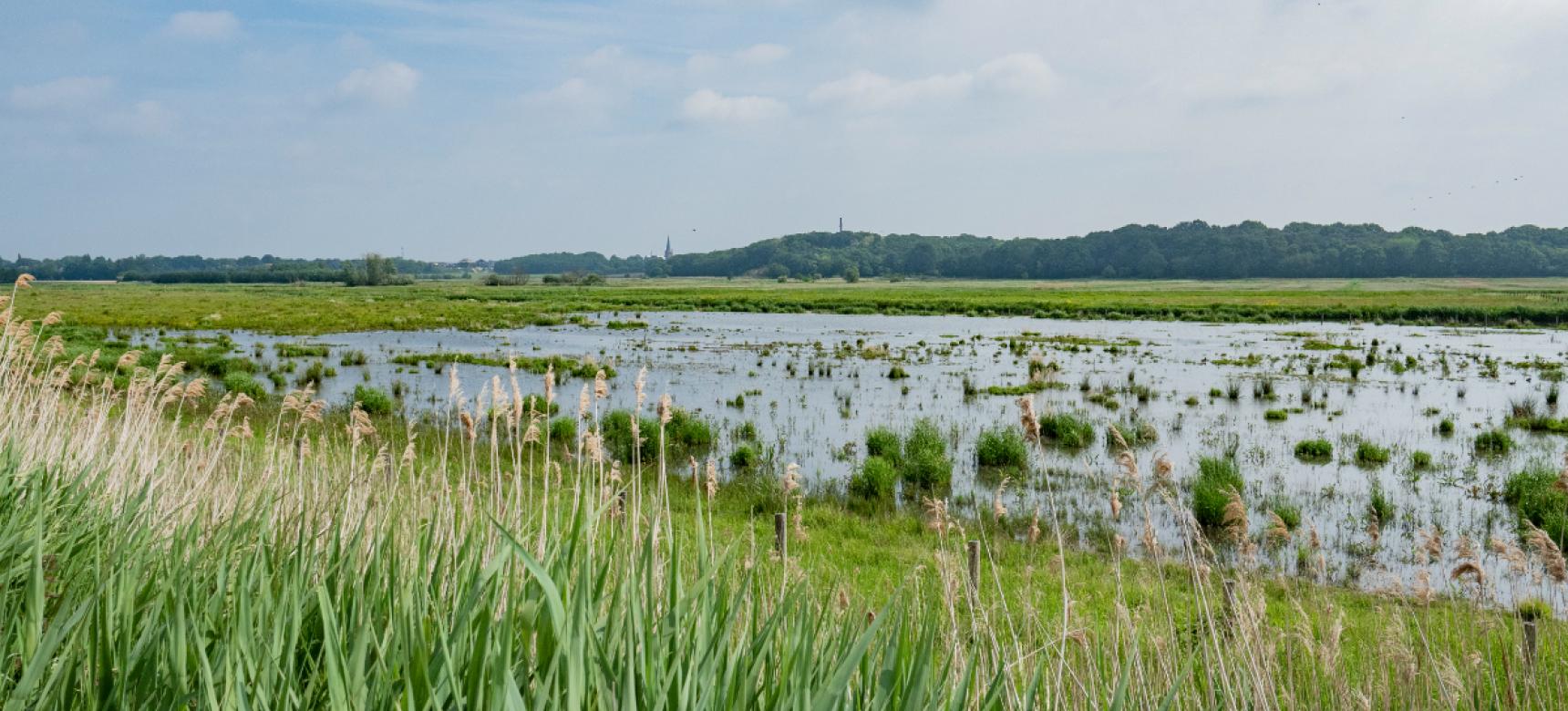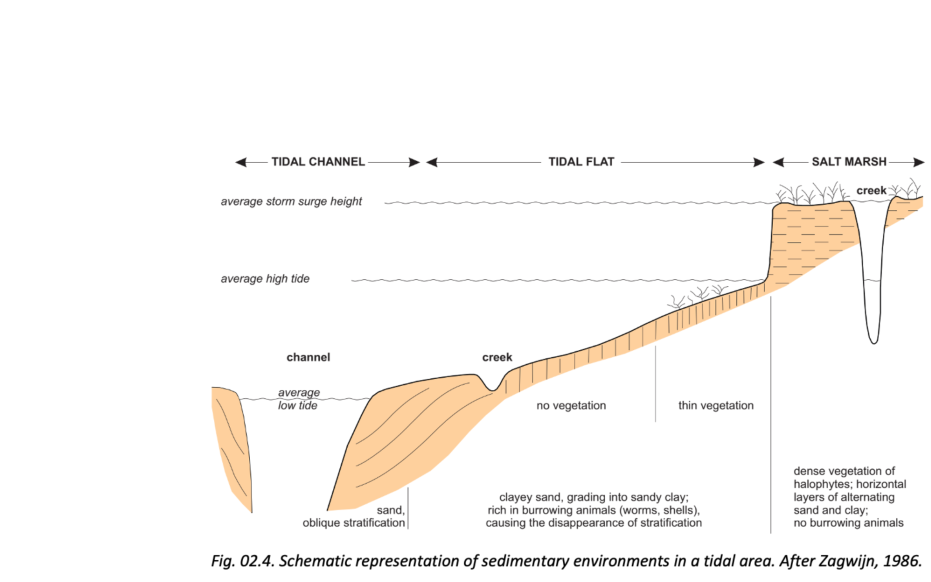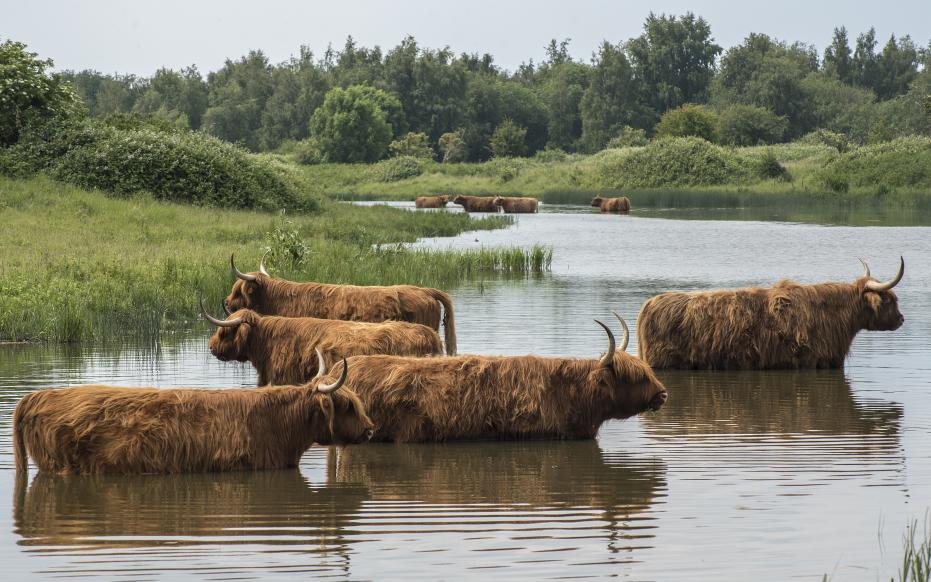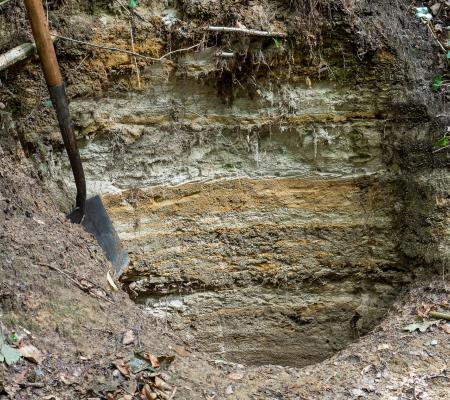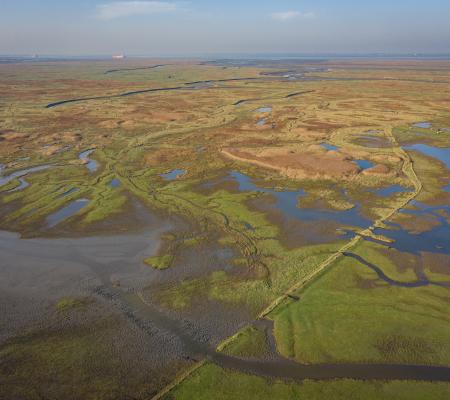Salt marshes, mud falts, and gullies
In a tidal area, the tide carries sediment (sand and clay) from the sea gullies twice a day, some of which is left in the coastal plain. Because sand is somewhat heavier and is transported only by fast-flowing water, it is deposited mainly in and along the gullies. Between the gullies are plates that overflow at high tide. A thin layer of sand can be deposited here at high tide. The finer and lighter clay particles can also be transported at low currents and are deposited mainly during current recession, the reversal of tide to ebb. Plains attached to the mainland or islands are called mudflats. The highest parts are the salt marshes, which overflow only during very high tides (spring tide and storm surge). Here the water is supplied and drained through a branched system of small stream channels. Clay is mainly deposited on the salt marshes. In addition, they are often overgrown with salt-loving plants. The part of a tidal area that only floods during spring tides is called bunting here and further north in the Dutch coastal area is called salt marsh.
